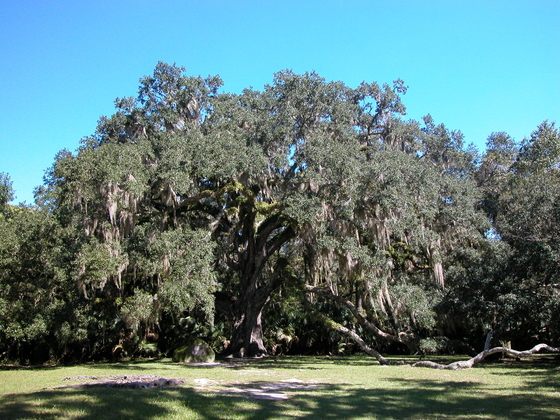|
Florida is home to more large (first and second magnitude) springs than any other state in the nation. In addition to supporting entire ecosystems, Florida's springs also offer many recreational opportunities such as swimming, kayaking and diving and snorkeling, attracting visitors from all over the world and serving as economic drivers for our communities.
During the past three years, the state and local governments have invested nearly $189 million in springs restoration. This funding has enabled the department to assist local governments and other stakeholders to identify and construct projects that are imperative to achieving restoration goals and protecting the state's water resources. Additionally, Governor Scott recently signed the Legacy Florida bill, which provides $50 million in recurring funding to continue restoration efforts.
Arbor Day Spotlight:
Fairchild Oak at Bulow Creek State Park
 One of Florida’s largest live oaks, this Fairchild Oak, is located in Bulow Creek State Park and is an estimated 400 years old. A native long before Florida became a state, the Fairchild Oak has survived through centuries of history and numerous natural disasters and stands as a symbol of Florida's diverse and beautiful environments.
|